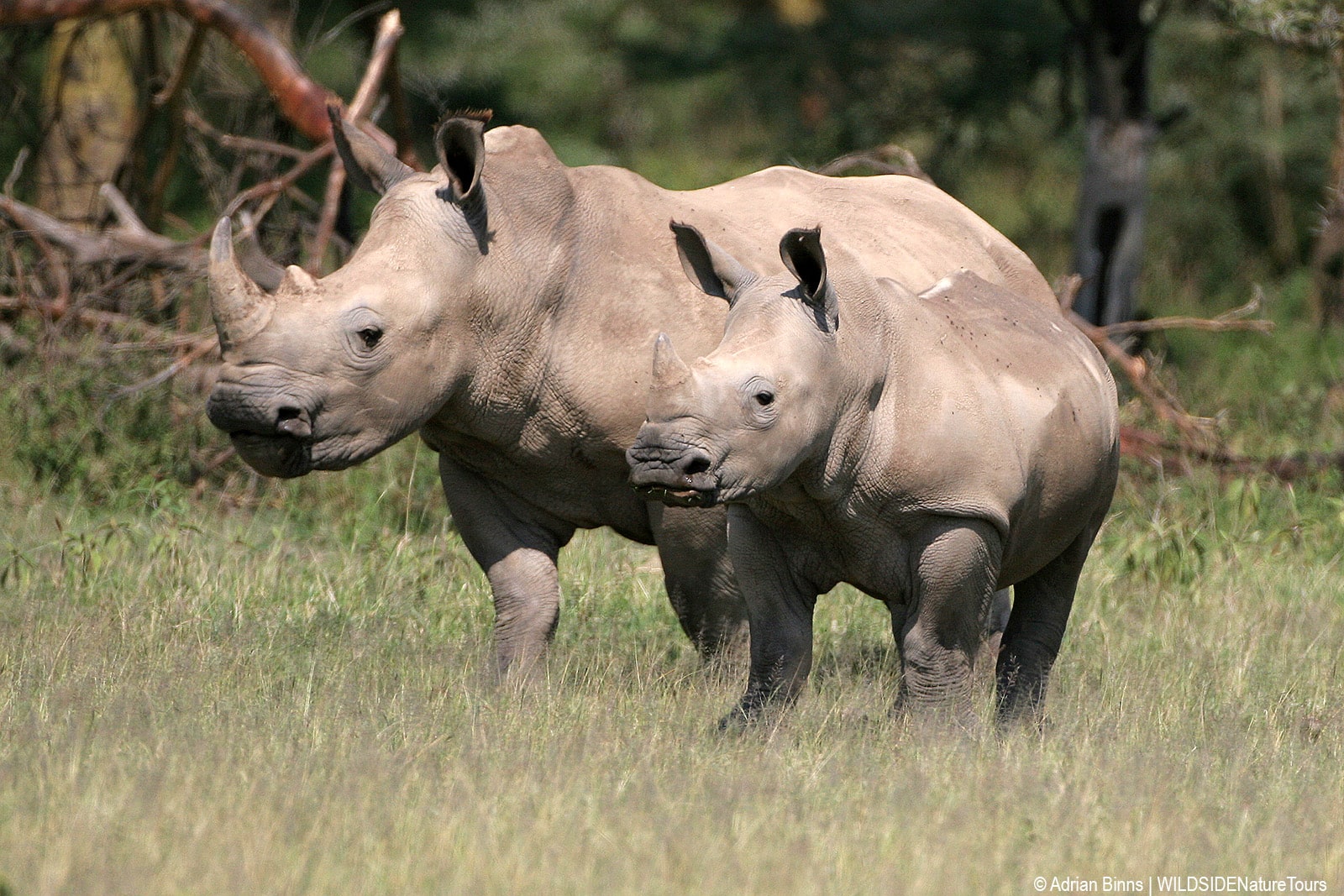
Rhinos and Tourists – an intricate connection
Sep 28, 2020 | by Adrian Binns
This past week, beginning September 22, we recognized two notable days: World Rhino Day and World Tourism Day, Sept 27.
World Rhino Day raises awareness and support for this remarkable animal. There are 5 species of rhinos in the world, and all face severe threats due to habitat loss, climate change, and poaching.

Black Rhino
World Tourism Day highlights the ways in which international tourism affects social, cultural, political and economic values. It celebrates and encourages travelers of all backgrounds and interests to explore our fascinating planet, travel to a new destination, experience different foods, customs and cultures.
The fate of rhinos are intricately linked to the tourist economy. Tourism dollars support wildlife conservation, advancing jobs and education for local communities. The stories are complicated for White and Black Rhinos, both found in Africa. These gentle giants have always been threatened by wanton trophy hunting and poachers seeking their valuable horns. Intensive conservation programs, rise in eco-tourism, and international policy changes have generally helped their populations, but the numbers are not consistent. In the last 50 years, White Rhinos have increased from 3,500 to approx 18,000 in the wild. By contrast, Black Rhino numbers have declined from 37,000 to 5,600.
As global travel and economies have shrunk during the covid-19 pandemic, Rhinos and other wildlife have been impacted in significant and surprising ways. Poaching, an ever-present threat, seems to be held at bay in some places, by more vigilant police presence. In other places, the closure of facilities and absence of tourists has emboldened poachers to roam unhindered.
NGO’s and other organizations cultivate valuable partners in the tourist industry. As the tourism economy shrinks, local workers are forced to seek scarce jobs elsewhere. The pressure on wildlife grows, as money, food, and other resources become more scarce for everyone involved.
Wildside Nature Tours recognizes the valuable work of conservation organizations and community partnerships. We can’t wait to get back to Africa to enjoy amazing birds and wildlife.
Rhinos can be seen on trips on the following Wildside trips, Botswana & Vic Falls Wildlife Safari, Namibia Desert & Etosha, Kenya 17-day Classic Wildlife Safari, Kenya 20-day Birding & Wildlife Safari, and Tanzania Wildlife Safari

White Rhino
































